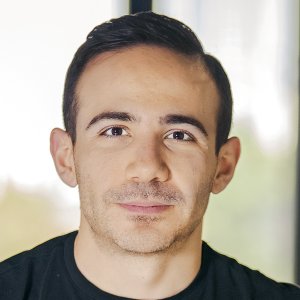
Entrepreneurship, Innovation Turn Needs into Business Opportunities
This is how the WHO defines innovation in healthcare: a response to unmet public health needs by creating new of ways of thinking and working that focus on the needs of the most vulnerable populations. In Mexico, the healthcare industry is ripe for innovation and the coming years are expected to attract growing interest from multiple stakeholders that could radically transform the industry.
While the bulk of attention in the sector often shines on research, new medicines and Big Pharma, innovators and entrepreneurs are emerging to address one of Mexico’s biggest health issue: access. The government is touting a universal health policy but with budget cuts and austerity measures, it could be hard-pressed to deliver. Entrepreneurs and emerging technologies are rising up, providing solutions that expand access to care and medicines, while many traditional institutions remain unprepared.
“Traditionally, healthcare is about a consult between a doctor and a patient. However, more and more businesses are springing up that offer health services in alternative ways,” says David Potes, CEO and Co-founder of Apolo Health. “Treatments can also be provided outside the hospital through new innovations and better communication platforms.” Potes adds that many health institutions are lagging behind. “A transformation similar to what visual media encountered with Netflix is coming to healthcare and many institutions are not prepared,” he says.
A report from the nonprofit organization Innovations in Healthcare constituted by Duke Global Health Institute, McKinsey & Company and the World Economic Forum, identified Mexico, along with other countries in Latin America, such as Brazil and Colombia, as destinations that are emerging clusters of health innovation, which can be preventive, promotional, curative, rehabilitative or assistive. Emerging companies in Latin America have raised between US$500,000 and US$100 million in the last 10 years, which also resulted in more than 25,000 full-time jobs in the region, according to LAVCA’s Inaugural Survey of Latin American Startups. The region has attracted the attention of players like Softbank, which initiated its US$5 billion Tech Fund for Latin America in 2018. This year, GINGroup also announced US$5 million fund to boost Mexican startups in areas like education, health and finance. The health innovation ecosystem includes a diversity of players. From digital platforms like OMI, Apolo Health, Prescrypto and Mural Med that support the digital management of clinical and administrative procedures for health provisioners, to chatbot applications like Yana that support the treatment of people with depression, innovators look for ways to transcend the way health products and services are provided.
Opportunities exist across the spectrum of services, says Juan Manuel Contreras, CEO of Ámbar Capital, a private equity firm specialized in technology and healthcare. “After several years with an extensive presence in healthcare services, Ámbar foresees significant opportunities in specialized clinics, hospitals and medical devices.” However, Contreras adds that not all startups in Mexico are at a point to warrant investment and turn this income into sustainable business opportunities. The firm “only invests in growing-mode companies with a defined client base, a proven business model and consistent and growing income,” he says.
Among the challenges, according to the OECD’s Estudios del Centro de Desarrollo Startup América Latina (Studies of the Latin American Startup Development Center), is a country’s ability to strengthen its innovation dynamics. That relies on the willingness of the public and private sectors to find forms of cooperation at different levels to develop public policies and spaces where new entrants can gain opportunities and support. Startups can also improve their chance of success in the market by including strong advisory elements. “[Startups] that have a relevant and active advisory board ... tend to outshine others,” says Lourens Verweij, Managing Partner at Additio Investment Group & Industry Advisor.
TECHNOLOGICAL ADVANCES
Medical devices and wearables are among the leading areas for innovation, but both face different challenges to enter the health market. Contreras says it is important to make a distinction between medical technologies and medical devices when talking about innovation. “Each type of technology has a different timeframe for development. While software or applications might take months to develop and the risk might be lower, approval and deployment can take years.”
Overall, the most innovative products of 2019, as highlighted by the prestigious Prix Galien Award, supported by the Galien Foundation, include Lynch Biologics’s recombinant human platelet-derived growth factor-BB (rhPDGF-BB) that stimulates the growth of mesenchymal stem cells, HumanOptics’s CustomFlex artificial iris for the reconstruction of eyes with complete or partial aniridia, Sonendo’s GentleWave system that features a unique fluid delivery and control system for root canal therapy, HeartLogic by Boston Scientific that predicts potential heart failure weeks in advance and detects early signs of worsening heart failure.
Technological innovation is happening at all levels of healthcare supply chain, but all of them have one thing in common: interoperability and connectivity. Individuals increasingly want wearables and technologies that adapt to their needs. “People now are far more integrated with the digital world; they communicate differently,” says Apolo Health’s Potes. The company’s A11 platform is an illustration of how a business must supply a user-based type of healthcare to meet digital demand in conjunction with healthcare requirements. Potes says that A11 patient engagement instruments include a portable app that is 100 percent blank so the health provider can satisfy the patient’s digital requirements.
INNOVATIVE THERAPIES
To help ease the burden on Mexico’s health system, both Mexican and foreign companies are working to develop innovative products and therapies. Engineering techniques for tissue and organ regeneration, according to an article by the International Journal of Molecular Sciences, have enabled the production and marketing of various skin grafts applied to patients over the past 30 years. Most grafts have been developed using biodegradable materials of natural or synthetic origin. Biotechnology is also generating products originating between the medicinal and food industries to create biotechnological foods. “The idea is to offer natural, regional and seasonal foods that stray from traditional pharmacology,” says Antonio Cruz, CEO of Kurago Biotek. “We expect functional products to become the unit within Sanfer’s structure that starts to gain ground in the health prevention and wellness area,” he says.
















